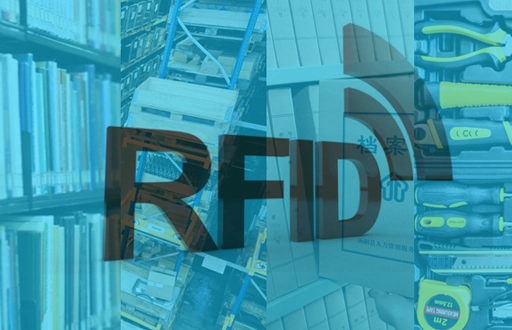In practical applications of RFID, there are often situations where a large number of tags are required to be read at the same time, such as the inventory of the number of goods in a warehouse, the inventory of the number of books in a library scenario, and also the reading of dozens or even hundreds of goods tags on a conveyor belt or pallet. In the case of most goods being read, the probability of them being read successfully is called the read rate.
UHF RFID is the technology of choice worldwide in the logistics and supply chain sectors, where longer reading distances and a wider scanning range of radio waves are desired.

What are the factors that affect the read rate of UHF RFID?
Read rates are affected by a number of factors in addition to the aforementioned read distance and scanning direction. For example, the speed of movement at the entrance and exit of the goods, the communication speed between the tag and the reader, the material of the attached goods and the outer packaging, the way the goods are placed, the temperature and humidity of the environment, the height of the ceiling, and the reader-to-reader influence.
These different environmental factors are intertwined with each other and together constitute a key challenge to overcome in the implementation of RFID projects.

How to improve the read rate of RFID multi-tags?

The number of tags that a UHF tag reader can read at once can be affected by several factors, including:
1. Tag Density
If there are a large number of tags in a small area, it can be difficult for the reader to distinguish between them and read them all at once.
2. Tag Orientation
The orientation of the tags relative to the reader can affect their readability. If the tags are not facing the reader’s antenna or are positioned at an angle, it can reduce the number of tags the reader can read at once.
3. Interference
Other radio frequency (RF) devices operating in the same frequency band can cause interference and reduce the reader’s ability to read tags.
4. Reader’s Antenna
The size, shape, and type of antenna used by the reader can affect its read range and the number of tags it can read at once. Different antenna designs have different beam widths, gain, and polarization, which can affect the reader’s performance.
5. Environmental Factors
The physical environment in which the reader is being used can affect its ability to read tags. Factors such as metal objects, walls, and other obstacles can reflect or absorb RF signals, reducing the reader’s range and performance.
It’s important to consider these factors when designing an RFID system and to test the reader in the actual operating environment to determine its maximum read range and read rate. Yiiro provides various types of UHF RFID readers for different projects, such as gate rfid reader, integrated rfid reader, multi-port rfid reader, desktop rfid reader, and handheld rfid reader. The reading range from <1m to 40m is available.
If you want to learn more about our UHF RFID Readers, or which RFID Tags work best with them please feel free to contact our experts who would be happy to help!